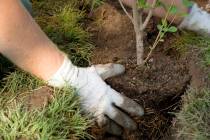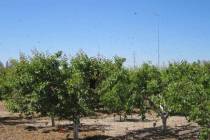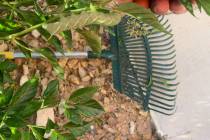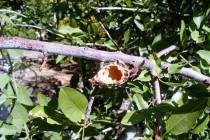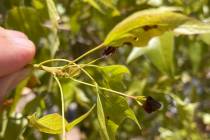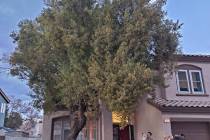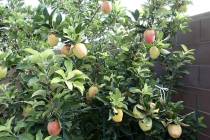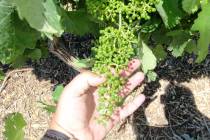Take this quiz and see how you stack up against other desert gardeners.
Bob Morris

Bob Morris is a horticulture expert and professor emeritus of the University of Nevada, Las Vegas. Visit his blog at xtremehorticulture.blogspot.com.
Never spray a plant that is flowering with anything. That’s a death knell to bees and their colonies.
All desert plants including hopseed bush are prone to this disease if grown in moist soils or in low spots in desert landscapes that accumulate water.
Pepper plant size depends on the variety. The recent trend in vegetable transplant hybridizing for home gardens is for closer spacing and early production.
Kurapia was started from the native plant, Lippia nodiflora, native to the tropical and subtropical areas of South America and the United States. That calls into question its tolerance to extreme desert temperatures and low humidity.
It is important to follow all federal, state or local laws or ordinances pertaining to the use of a pesticide — whether it is used to kill weeds, insects, protect plants from diseases or terminate the life of a critter — and that any pesticide is used as a last resort.
When it is young, a bottletree needs about 20 to 30 gallons each time it is watered. But the soil shouldn’t be continuously wet six days a week. The roots need a chance to breathe.
When phosphorus is available, it helps plants flower and grow roots. But for new plants, it’s a good idea to have it present from the start. If phosphorus is in short supply, it can cause stunting and poor growth.
African sumac is considered somewhere between mesic and xeric in its water use. It’s not a true desert tree, but it can handle both a desert landscape and non-desert as well.
I have had some reports of poor fruit production with Gala grown in the desert, but I have not found that to be true.
There are natural products that you can apply for controlling grubs of June beetles, including insect-devouring — but plant-friendly — nematodes.
Rose of Sharon is a hardy and fun deciduous shrub for our climate. It’s considered mesic in its water use and not meant for desert landscapes.
If young trees are given a lot of nitrogen fertilizer then new growth will be pushed at the expense of flowering.
Desert climates are notoriously low in humidity, particularly as the day gets warmer, so we enjoy fewer plant diseases and worry about them less than in places with humidity.
Plants like mesquite, palo verde and acacia are xeric in their water use. They use less water than alternative trees and shrubs and are controlled with applications of water.



